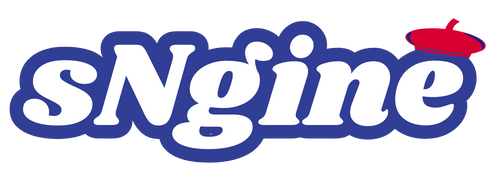The Antioxidant Additives Market is witnessing substantial growth, driven by rising demand across food, pharmaceutical, and industrial sectors. Antioxidant additives are increasingly essential in preventing oxidation, extending shelf life, and improving product stability. Their applications span from edible oils and processed foods to personal care products and lubricants, creating widespread market opportunities globally.
Rising consumer awareness about health and nutrition is a primary factor fueling demand for antioxidant additives. The increasing preference for natural and clean-label products is encouraging manufacturers to integrate antioxidants derived from natural sources such as vitamin E, vitamin C, and carotenoids. These trends are further supported by global initiatives promoting food safety and quality standards, ensuring a steady market trajectory.
However, market growth faces challenges from stringent regulatory policies and high costs associated with natural antioxidant extraction. Synthetic antioxidants, while effective, are often scrutinized due to potential health concerns, which may restrict their application in food and personal care sectors. Despite these hurdles, the market remains poised for steady expansion over the forecast period.
Request a Sample Report: https://researchintelo.com/request-sample/8885
Market Overview and Key Drivers
The global antioxidant additives market was valued at USD 3.6 billion in 2024 and is projected to reach USD 5.2 billion by 2030, growing at a CAGR of 6.2% during the forecast period. Major drivers include:
-
Increasing Demand for Functional Foods: Consumers are seeking products with added health benefits, promoting the use of antioxidants to prevent oxidative damage.
-
Growth in Pharmaceutical Applications: Antioxidants are vital in drug formulation to maintain stability and efficacy over shelf life.
-
Industrial and Cosmetic Use: Antioxidants are increasingly used in lubricants, plastics, and personal care products to prevent degradation and improve performance.
The Asia-Pacific region is emerging as a dominant market, driven by rapid industrialization, growing population, and increasing adoption of fortified foods and supplements. North America and Europe continue to hold significant market shares due to established pharmaceutical and food processing industries.
Restraints and Challenges
Despite promising growth, the market faces several constraints:
-
Regulatory Hurdles: Compliance with global food and drug regulations can be complex and costly.
-
High Production Costs: Natural antioxidants are more expensive than synthetic alternatives, impacting profit margins.
-
Consumer Safety Concerns: Certain synthetic antioxidants are under scrutiny, which may limit their use in food and beverages.
These factors may slow down market penetration in certain regions, particularly where regulatory frameworks are stringent. Companies must focus on innovation and cost-effective solutions to overcome these challenges.
View Full Report: https://researchintelo.com/report/antioxidant-additives-market
Opportunities and Emerging Trends
The market for antioxidant additives is ripe with opportunities. Rising health consciousness is encouraging the development of natural and clean-label antioxidants. Key trends include:
-
Shift Toward Natural Antioxidants: Ingredients like rosemary extract, green tea polyphenols, and tocopherols are gaining traction in food and personal care formulations.
-
Technological Advancements: Innovations in extraction and formulation processes enhance the stability and efficacy of antioxidant additives.
-
Expansion in Emerging Economies: Increasing disposable income and urbanization are creating new consumer bases in Asia-Pacific, Latin America, and Africa.
These opportunities allow manufacturers to diversify product portfolios and explore niche applications, especially in functional foods, beverages, and dietary supplements.
Market Segmentation and Dynamics
The antioxidant additives market is segmented based on type, source, application, and geography:
-
By Type: Synthetic antioxidants (BHT, BHA, TBHQ) and natural antioxidants (vitamins, polyphenols, carotenoids).
-
By Source: Plant-based, animal-based, and synthetic sources.
-
By Application: Food and beverages, pharmaceuticals, cosmetics, lubricants, and industrial applications.
Food and beverages remain the largest application segment, accounting for over 45% of market share. Pharmaceuticals follow closely, reflecting the increasing use of antioxidants in drug stability and shelf-life extension. Industrial applications are witnessing gradual adoption, especially in lubricants and polymers, where antioxidants prevent oxidation and maintain performance.
Enquire Before Buying: https://researchintelo.com/request-for-customization/8885
Regional Insights
-
North America: The market is mature, with high demand from the pharmaceutical and processed food sectors. The U.S. dominates due to stringent quality standards and advanced R&D.
-
Europe: Growth is supported by consumer preference for natural and organic products, coupled with strong regulatory frameworks ensuring product safety.
-
Asia-Pacific: Fastest-growing region, driven by industrial expansion, rising urban population, and increased health awareness. Countries like China, India, and Japan are major contributors.
-
Latin America & Middle East & Africa: Moderate growth is expected, primarily in food and personal care sectors, with emerging awareness of antioxidant benefits.
Competitive Landscape
The market exhibits moderate competition with significant potential for new entrants focusing on natural antioxidants. Key strategies include product innovation, research collaboration, and expansion into emerging markets. Manufacturers emphasizing sustainability and clean-label products are likely to gain a competitive advantage.
Check Out the Report: https://researchintelo.com/checkout/8885
Future Outlook
The global antioxidant additives market is set for robust growth in the coming years. Increased adoption across multiple industries, rising health awareness, and technological advancements in antioxidant formulations are anticipated to drive demand. Companies investing in natural, safe, and cost-effective additives are expected to capture significant market share.
With continued focus on clean-label trends, functional foods, and preventive healthcare, antioxidant additives will remain a critical component of food, pharmaceutical, and industrial products. Market players are likely to explore innovative solutions to meet evolving consumer preferences and regulatory requirements.
Conclusion
The Antioxidant Additives Market offers promising growth potential fueled by health-conscious consumers, technological innovations, and diverse applications. Strategic investments in natural antioxidants, cost-effective manufacturing, and market expansion can help companies capitalize on emerging opportunities while addressing regulatory and cost challenges. The market outlook remains positive, reflecting a strong trajectory toward sustainable and functional solutions.


